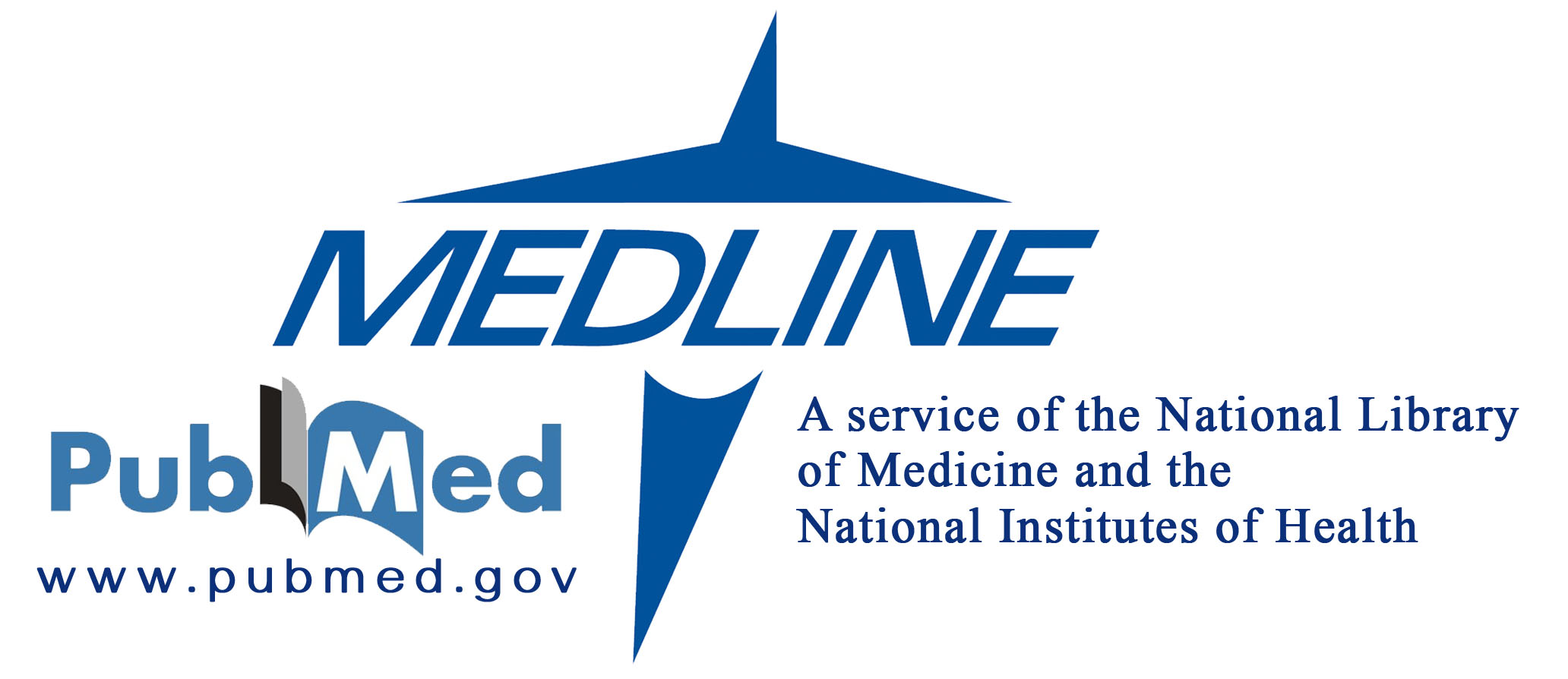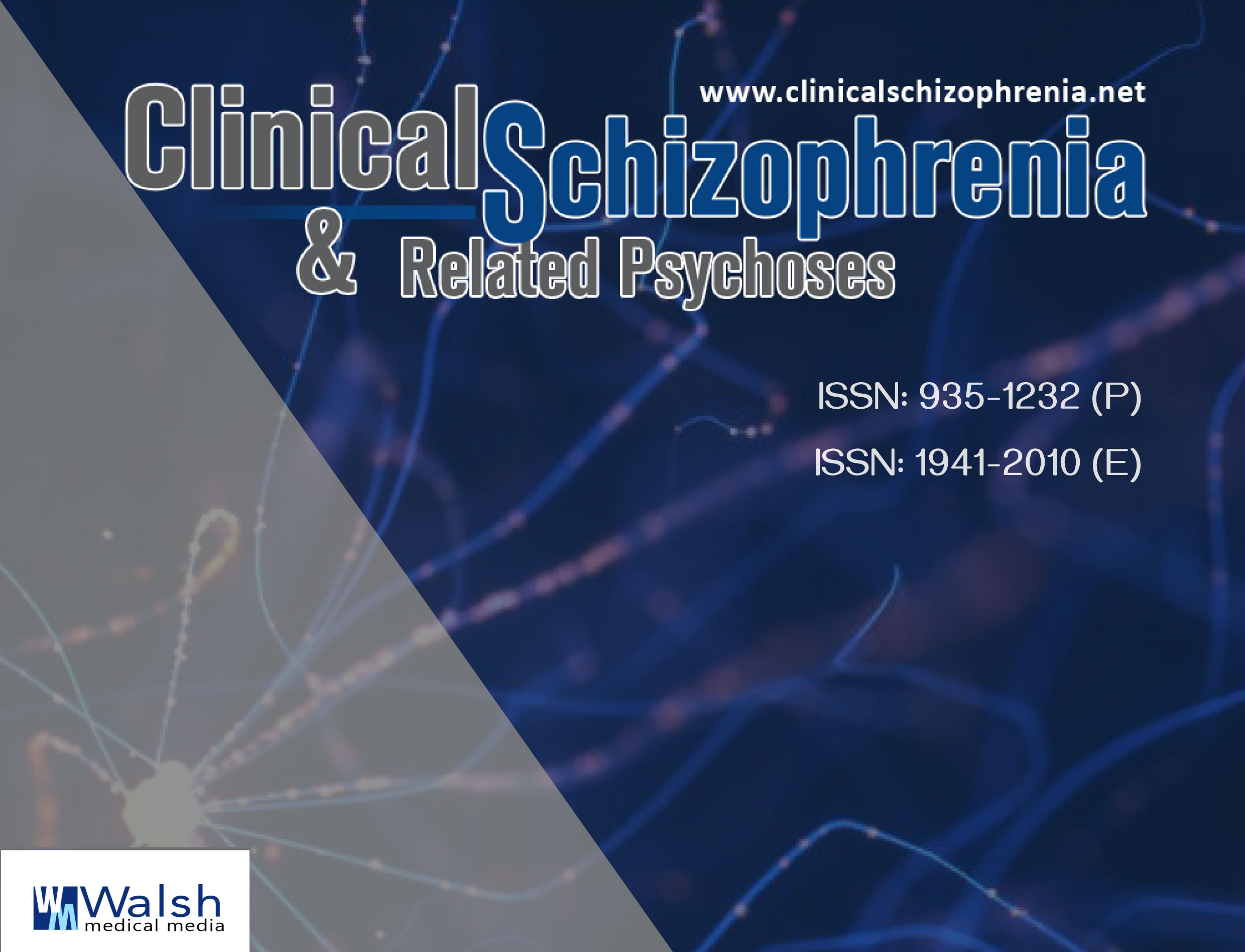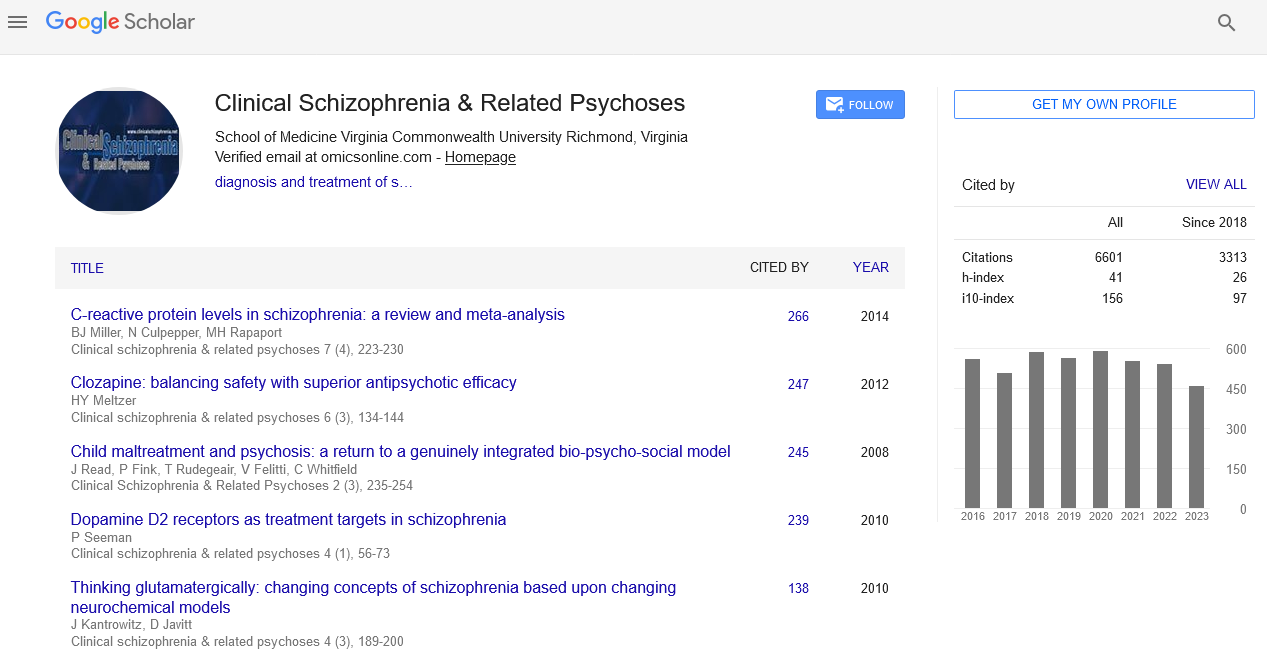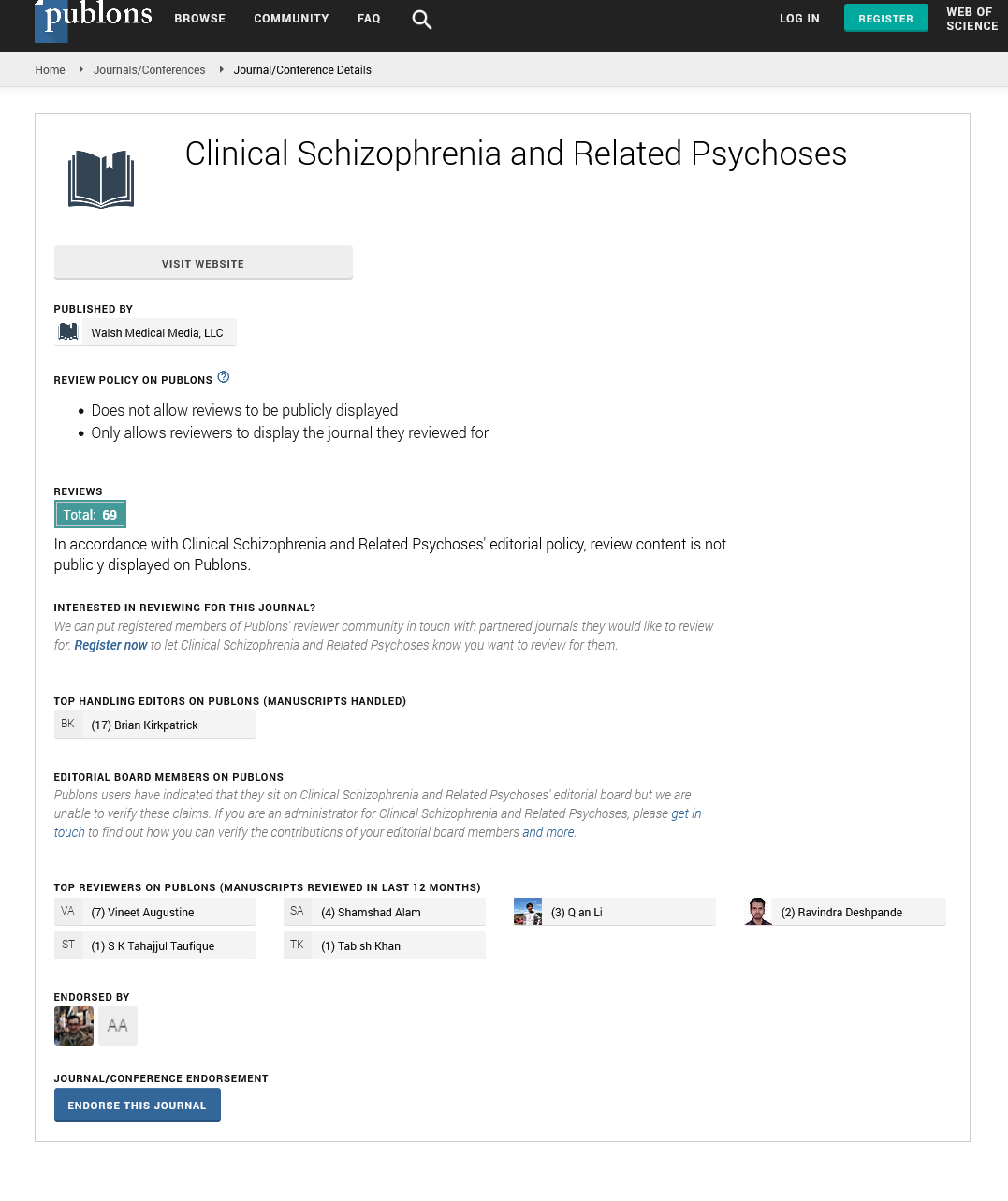Mini Review - Clinical Schizophrenia & Related Psychoses ( 2025) Volume 19, Issue 1
Nature vs Nurture: A Fraudulent Adoptive Study
Dolores Malaspina* and Ezequiel LafontDolores Malaspina, Department of Psychiatry, The Icahn School of Medicine at Mount Sinai, New York, USA, Email: Dolores.Malaspina@gmail.com
Received: 19-Mar-2025, Manuscript No. CSRP-25-162652; Editor assigned: 24-Mar-2025, Pre QC No. CSRP-25-162652 (PQ); Reviewed: 07-Apr-2025, QC No. CSRP-25-162652; Revised: 14-Apr-2025, Manuscript No. CSRP-25-162652 (R); Published: 21-Apr-2025, DOI: 10.3371/CSRP.MDEL.013225
Abstract
A clandestine study of genes and the environment was putatively conducted by the Louise Wise Adoption Agency. Under the guidance of one (or two) prominent psychiatrists, identical twins were secretly placed in separate homes as singleton births and longitudinally followed in their adoptive homes, unbeknownst to them or their adoptive parents. This was described as a “child development study” but no informed consent was provided by the biological mother or adopting parents or the adoptees themselves as participants in human research. Less attention has been directed to the six-month placement in “foster care” for twin infants as well as singletons, during which some testing or evaluation occurred, where the agency concealed severe mental illness in the biological parents. The lead researchers, deeply aware of the genetic research underpinning the Nazi’s murder of a quarter of a million persons with severe mental illness, pursued this work in a time when environmental factors were increasingly implicated as causing schizophrenia in the US. These facts plausibly support an additional research agenda on the heritability and early manifestations of psychosis as inherited from a biological relative. This review further develops information on another potential study being conducted by the Louise Wise Agency. This is an opportunity to refocus attention on the theories and methods of this controversial study and a lesson for our times.
Keywords
Schizophrenia • Psychosis • Louise Wise Agency • Identical twins • Genetics • Heritability
Introduction
A film called The Twinning Reaction and another titled Three Identical Strangers aroused public interest and directed scrutiny to an unethical and covert twin study conducted by the Louise Wise Adoption Agency by its director, Dr. Viola Bernard and her collaborator Dr. Peter Neubauer [1-3]. They fraudulently characterized identical twins as singleton births to adopting families to test the effects of different rearing environments on the development of genetically identical persons for a ‘social good’ when they were going against the genetic theories of mental illness by attempting to demonstrate the weight of environment by separating twins. It is now public knowledge that the Louise Wise Adoption Agency had an occult research agenda which should immediately obviate this fraudulent defense. While a 2019 review of the study takes on a more positive tone, less attention has been given to other troubling aspects of the experiment which indicate that its central hypothesis was to investigate the inheritance of severe mental illness [4].
The Louise Wise Agency excluded hidden research where offspring from mentally ill parents were fraudulently presented as adoptees with healthy parents and are detailed in a legal case, with co-author Dolores Malaspina serving as an expert witness before the separated twin component of the study received such attention [5]. This secrecy inflicted unnecessary guilt and grief on adoptive parents who were led to believe they were solely responsible for the children’s psychological issues. The study’s true aims will not be fully known until the archives are unsealed at Yale University in 2065 [2]. This review is an opportunity to re-examine the methods and ethics of this controversial research-a study that still holds significant lessons for us today.
Historical context
Family twin and adoption studies consistently supported a role for the heritability of schizophrenia in the middle 1900s [6]. The Eugenics movement considered persons with schizophrenia to be genetically inferior [7-8]. For Black and brown persons, this malevolent perspective began in the United States to support slavery and was exported by the Nazis [9]. For persons with schizophrenia the state permitted and advocated sterilization to purify the gene pool [10]. The simplistic explanation for the heritability of schizophrenia at that time was that the risk was conveyed by one or several highly penetrant genes and could be eliminated by sterilization of affected persons [7]. Conversely, we now know that some genetic vulnerability for schizophrenia is continually replenished through the introduction of gene mutations into the population that are largely introduced in association with paternal aging, and that a larger portion of the risk for schizophrenia appears to be attributable to prenatal, life-course and even intergenerational adversity influencing gene expression towards a proinflammatory phenotype [11].
The horror of the Eugenic perspective was realized in American psychiatry following the Holocaust murder of six million Jews and other persons considered to be undesirable by the Third Reich under Hitler. Less appreciated is that the initial slaughter was all persons with serious mental illness, including veterans from World War I and even children who Dr. Hans Asperger, an Austrian physician, considered to be at high risk for adult psychosis as a prelude to the murder of Jews and others considered to be inferior [12]. Was the enormous impact of discrimination and stigmatization on disadvantaged persons how the investigators justified imposing an unethical research study of the participants of the Louise Wise Agency?
More than a twin study, a focus on the heritability of Serious Mental Illness (SMI)
Whether or not Dr. Neubeuer’s aims were to study the changes in neurocognition related to the environment or the inheritance of mental illness continues to remain a mystery. However, evidence of various twins, triplets, and adoptive parents’ experiences may shed light on the psychiatrist’s motivations. One theory, in an attempt to probe the environment, consists of studying twins with identical genetics to diminish potential confounders. If it truly was a nature vs. nurture study, the investigators would have limited themselves to examining identical twins reared apart in varying environments. However, key evidence is missed, as the literature and media’s adapted films position the focus on monozygotic twins reared apart and ignores singletons also simultaneously studied. Thus, we posit that various studies were being conducted at once, with singleton cases examining the inheritance of mental illness.
Key player forgotten in time
Dr. Peter Nauberer garnered much of the attention of the public eye surrounding the Louise Wise controversies while Dr. Viola Bernard’s involvement was greatly overlooked. This raises a series of questions on her less examined role and why the focus was primarily on Dr. Neubauer. Evidence of their collaboration is noted in Yale’s archives where Neubauer and Bernard worked together to explore if human behavior was more affected by genetics or environment [13]. If it was believed that Viola Bernard was only separating twins because she thought they fared better when raised by separate families, her passions, focus and scholarship were greatly underestimated [4].
Dr. Bernard, a privileged Jewish woman from New York, was in Europe in 1939 when Hitler enacted the "euthanasia" program to murder those deemed to be sub-human, or a "life unworthy of life" which included those with mental illness [13]. Based on her life’s work and accomplishments, one must assume these ideas were the antithesis of her beliefs. She founded community psychiatry, was active in civil rights, liberties, peace movements, and was a founding member of the Group for the Advancement of Psychiatry. Bernard supported Black physicians in training and fought to see racial barriers dismantled in psychiatry [13]. Bernard was a strong activist for various social justice movements during the time the Eugenics theory circulated around Europe and acknowledged its influence seen in marginalized groups in America [13]. It cannot be excluded that the study of identical twins raised in different environments and the false adoption of offspring of mentally ill parents into healthy homes was designed to counter the Eugenic perspective. Doubtless, Dr. Viola Bernard recognized that the pseudoscience of Eugenics employed by the Nazi’s to annihilate millions of persons had been forged in the US to justify the racism that she fought against over her career.
Beyond a twin study: Concealing psychiatric illness in biological parents of adoptees (The R Case)
In 1999, the R family learned from a newspaper article that the Jewish adoption agency through which they adopted their son had concealed diagnoses of schizophrenia in the birth parents of an adoptee. They received for the first time, their sons’ actual birth family information. At the adoption and for decades thereafter they were told a false narrative that concealed evidence of severe mental illness, likely schizophrenia, in his biological mother, father and maternal grandfather.
Author Dolores Malaspina was asked to serve as an expert witness for the case of “R family versus Louise Wise Services, Inc”, alleging wrongful adoption/fraud, negligence, breach of fiduciary duty, and intentional infliction of emotional distress [5]. The information from this case suggests the agency was also conducting a study of the risk for mental illness in offspring of affected parents who had been adopted into families who had no information about the psychiatric illnesses in the birth families. The adopting parents were carefully evaluated by the agency and described as happily married, well educated and successful - the father was at the top of his profession in advertising with a well-balanced family and social life. They had no personal or family history of psychiatric disorder and were deemed superior in dealing with adversity. They requested a healthy infant from a healthy family and were offered a boy.
The social worker in the R case described the birth mother as a bright person and a high school graduate who later attended a school of design. The birth father was described as “intelligent” and “ruggedly handsome”. The actual record indicated that the biological mother was in the constant care of a psychiatrist and displayed significant functional impairments. She failed to maintain matriculation in different colleges and had few friends. Medical records indicated she had hopelessness and isolation, with a guarded prognosis. The biological father and the maternal grandfather were diagnosed with schizophrenia in the record; the latter was committed to a psychiatric inpatient unit for a year and a half due to paranoid delusions.
The biological mother affirmatively stated that her home situation was abnormal, and that perhaps she was not normal. The records showed that the mother eventually died by suicide.
Their adoptive son was an active, difficult infant who slept poorly, but was also reported to be a happy baby who was warmly attended by his mother. At age four, his parents sought professional help for troublesome behavior. He was abnormally impulsive and hyperactive, consistently hit other children, and would push children down in the park without provocation. By age nine, he had severe hyperactivity, insomnia, impulse control, inattentiveness and was physically and verbally abusive to his mother. He demonstrated complete disregard for any set limits and boundaries, had inappropriate sexual curiosity, and poor conduct. He had several meetings with the agency’s own psychiatrist, who knew of his bilateral family history of schizophrenia, but did not inform the family of his risk and, despite these visits, continued to deteriorate. The marriage was deteriorating, in part over the mother’s wish for treatment versus the father’s hope that the son would outgrow this behavior, which ultimately led to their divorce.
By age twenty years old, he was withdrawn and had few friends. He eventually graduated from college after attending several different schools but could not gain entrance to graduate school and could not sustain employment due to behavioral issues, becoming financially dependent on his father. At age twenty-one, he appeared at the office of the agency’s psychiatrist without an appointment, asking about a report he believed she had written about him. The doctor was concerned and frightened by his appearance and demeanor. She told the staff he was a paranoid schizophrenic, capable of violence, and that they should be aware of this. Despite the strong caution to the agency’s staff, the family was not notified and no steps were taken to help the son. It would be another fourteen years of deterioration before the diagnosis was made.
In 1984, following the enacted adoption disclosure law, the son made an appointment to learn his full background and family medical information, but the director of post adoption services prohibited the staff from such disclosure. The subject’s father was unable to establish a romantic relationship after his divorce as the romantic interests were all afraid of the subject. During subsequent weeks, the son continued to be erratic and was found throwing large slabs of utensils down the yard, showing clear signs of psychosis. He was hospitalized and subsequently diagnosed as having paranoid schizophrenia.
The court took into account the agency’s failure to supply essential information for an accurate diagnosis and treatment during his childhood, deceit towards his private psychiatrist at the age of twelve, and the alarming lack of action when the agency identified him as a schizophrenic, violating the 1983 law of enacted adoption disclosure. Concealed adoptions were the norm at that time, but this adoption was fraudulently falsified and not confidential, suggesting another motivation.
By presenting an inaccurate portrayal of the birth family’s health, crucial information about the son’s vulnerability was withheld from the family, clinicians, and schools. By contrast, the agency was notified by their own psychiatrist that the son was a dangerous person with paranoid schizophrenia when he was just twenty. Tragically, neither the son nor the parents were informed of this psychiatric assessment. The costly obfuscation continued, leading to the disintegration of the family, the father’s unemployment and his eventual severe stress-related major depression.
Conclusion
Until 2065, the full scope of the concealed research agenda will be contestable, though it is undisputed that the Louise Wise Agency and their collaborators’ secrecy raises many questions in the scientific community surrounding ethical conduct, the role of genetics and heritability, and the integrity of scientific research policies of the time.
Consent for Publication
Authors are responsible for declaring any financial or personal interests that could affect the research or its outcomes. And also responsible for respecting copyright laws.
Conflict Of Interest
The authors declare there are no conflicts of interest.
References
- The Twinning Reaction. Directed by Lori Shinseki. United States: Fire Horse Films, 2017.
- 20/20: Secret Siblings. Directed by David Sloan. ABC News, 2018.
- Three Identical Strangers. Directed by Tim Wardle. United States: CNN Films & Raw TV, 2019.
- Leon Hoffman and Oppenheim Lois. "Three Identical Strangers and the Twinning Reaction-Clarifying History and Lessons for Today from Peter Neubauer’s Twins Study." JAMA 322 (2019): 10-12.
[Crossref] [Google Scholar] [Pubmed]
- Ross V Louise Wise Servs, 4 Misc. 3d 279, 777 N.Y.S.2d 618 (N.Y. Sup. Ct. 2004).
- Dolores Malaspina, Corcoran Cheryl and Steven P Hamilton. "Epidemiologic and Genetic Aspects of Neuropsychiatric Disorders." (2002).
- Torrey, E Fuller and Robert H Yolken. "Psychiatric Genocide: Nazi Attempts to Eradicate Schizophrenia." Schizophr Bull 36(2010): 26-32.
[Crossref] [Google Scholar] [Pubmed]
- Stephen Pow and Stahnisch Frank W. "Eugenics Ideals, Racial Hygiene, and the Emigration Process of German-American Neurogeneticist Franz Josef Kallmann (1897–1965)." J Hist Neurosci 25(2016):253-274.
[Crossref] [Google Scholar] [Pubmed]
- Wynia Matthew K. "Past: Imperfect; Future: Tense." Hastings Cent Rep 53(2023): 2-2.
[Crossref] [Google Scholar] [Pubmed]
- Grunebaum Henry and Virginia Abernethy. "Ethical Issues in Family Planning for Hospitalized Psychiatric Patients." Am J Psychiatry 132(1975): 236-240.
[Crossref] [Google Scholar] [Pubmed]
- Malaspina Dolores. "What Social Determinants Can Tell Us About Schizophrenia." Schizophr Res (2023): 114-116.
[Crossref] [Google Scholar] [Pubmed]
- Sheffer Edith. Asperger's Children: The Origins of Autism in Nazi Vienna. WW Norton and Company, 2018.
- Three Identical Strangers and the Twinning Reaction-Clarifying History and Lessons for Today from Peter Neubauer’s Twins Study
Citation: Malaspina, Dolores, Ezequiel Lafont. “Nature vs. Nurture: A Fraudulent Adoptive Study.” Clin Schizophr Relat Psychoses 19 (2025). Doi: 10.3371/CSRP.MDEL.013225.
Copyright: © 2025 Malaspina D, et al. This is an open-access article distributed under the terms of the creative commons attribution license which permits unrestricted use, distribution and reproduction in any medium, provided the original author and source are credited. This is an open access article distributed under the terms of the Creative Commons Attribution License, which permits unrestricted use, distribution, and reproduction in any medium, provided the original work is properly cited.






